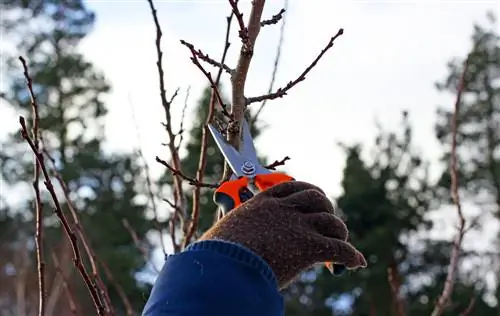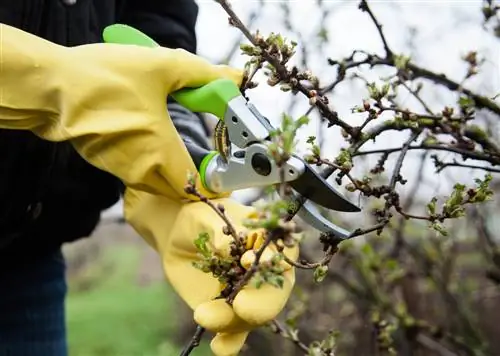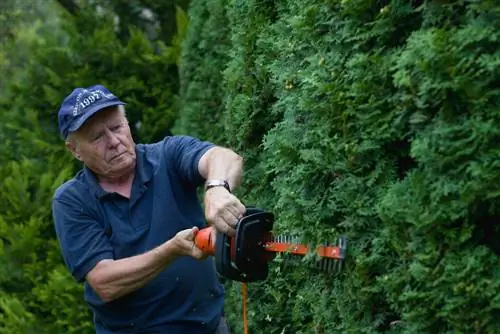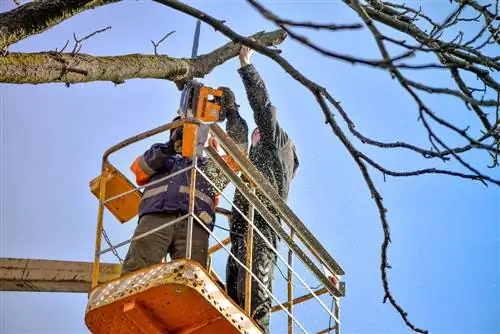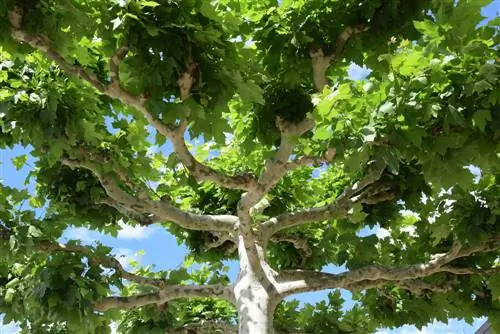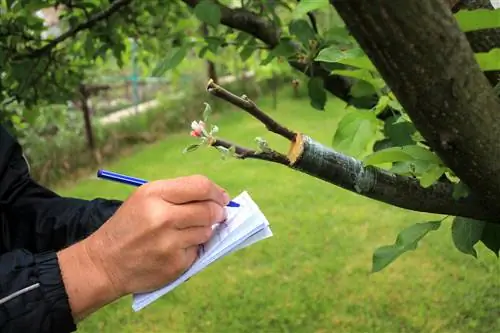- Author admin [email protected].
- Public 2023-12-16 16:46.
- Last modified 2025-06-01 06:02.
The optimal crown shape of ornamental and fruit trees depends largely on the fact that you observe the strict hierarchy of branches. This guide explains why this is the case and which branch categories are important for pruning care in the home garden.
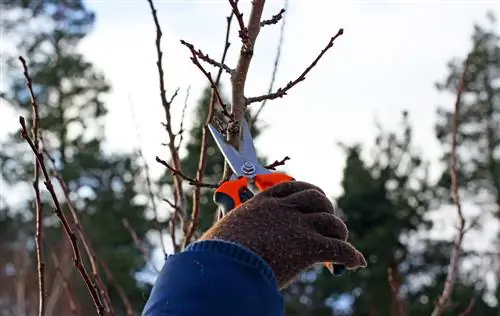
Why are branch categories important for ornamental and fruit trees?
Branch categories in ornamental and fruit trees are important for optimal crown shape and fruit yield. They include trunk extensions, leading branches, side branches, scaffold branches, fruit or flower branches and fruit or flower wood. Targeted pruning care, taking this hierarchy into account, promotes flower formation and growth.
Why are branch categories worth noting?
The apple tree had a sad existence in the garden of house gardener Müller. Every winter the outer branches were diligently cut back, similar to a hedge trimming. A richly branched, mighty crown with dense foliage then formed. No trace of flowers or apples anywhere.
This little story illustrates the consequences of ignoring the hierarchy of branches when pruning a tree. Where all shoots with a similar diameter thrive, there is fierce competition for growth towards the light. The formation of flowers and fruits falls by the wayside.
If, however, the pruning care takes into account a branch hierarchy in the form of leading branches with subordinate fruit and flower branches and fruit or flower wood attached to them, the perfect crown shape is created. A lush flower dress and a rich fruit yield will not be long in coming.
Branch categories at a glance - classic classification system in a nutshell
In the pruning care of ornamental and fruit trees, there are various classification systems for naming branches according to their position and function within the crown. The following overview is dedicated to one of the most common categorizations of branches for the perfect crown structure:
Stem extension/middle shoot
The vertical extension of the trunk or central shoot into the crown. The starting point is above the first side shoots. The trunk and trunk extension form the main axis of a tree crown and are part of the framework.
Leitast
Dominant branch starting from the trunk extension. Several leading branches and the side branches attached to them, together with the trunk extension, form the permanent basic structure of a tree crown. On a tall ornamental or fruit tree, for example, the training pruning aims to create a framework of trunk extensions with 4 to 5 leading branches.

side branch
Subordinate branch starting from a master branch, as a permanent component in the basic structure.
Scaffolding Branch
Comprehensive term for all branches that are part of the permanent framework of a tree or that are used for this function in the course of pruning care.
Fruit branch/flower branch
Subordinate, usually weaker crown branch, which will bear flower buds or fruit, or which is intended to have such a function in the course of pruning care. A fruit or flower branch can be located in different positions within the crown and is not part of the permanent framework.
Fruitwood/Flowerwood
Collective term for all subordinate, weaker or short branches within the crown. It is characterized by a dense set of buds, short internodes and markedly weak growth.
Within the branch categories, a further distinction is made that relates to the respective branch diameter. The following table summarizes the values:
| Branch category by diameter | Branch diameter |
|---|---|
| Starkast | more than 10 cm |
| Grobast | 5 to 10 cm |
| Weakast | 3 to 5 cm |
| Fineast | 1 to 3 cm |
| fine branch/branch | less than 1 cm |
Tip
When home gardener Müller became familiar with the branch categories, the apple tree benefited from the newly acquired expertise. In the first step, the crown was opened from above to gain an insight into the tangle of branches. The 5 strongest shoots on the lower crown levels were chosen to be ledge branches and trunk extensions. The strongest branches on the upper floors had to give way. The gardener left hand-picked, weakly growing shoots on the trunk extension and leading branches as future fruit branches that produce the valuable fruit wood.

